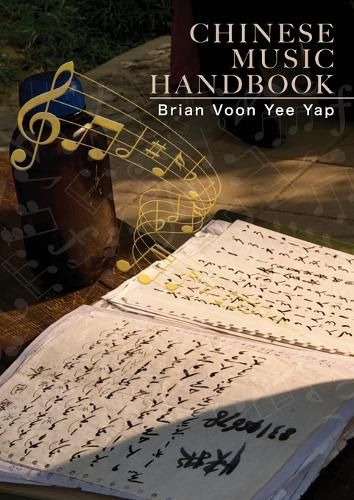Readings Newsletter
Become a Readings Member to make your shopping experience even easier.
Sign in or sign up for free!
You’re not far away from qualifying for FREE standard shipping within Australia
You’ve qualified for FREE standard shipping within Australia
The cart is loading…






This title is printed to order. This book may have been self-published. If so, we cannot guarantee the quality of the content. In the main most books will have gone through the editing process however some may not. We therefore suggest that you be aware of this before ordering this book. If in doubt check either the author or publisher’s details as we are unable to accept any returns unless they are faulty. Please contact us if you have any questions.
This book is written as a guide for people who know the western staff notation and want to know about writing music that sounds like traditional Chinese music.
This book is split into two parts. The first part describes the techniques needed to create Chinese style music. The second part is about the underling theory of the notation systems and pitch selection.
The Chinese music system is quite prescriptive. Of course, you do not need to follow it. But if you do, you will be on the path to have music that sounds like traditional Chinese music.
I have used simplified Chinese characters in the main book. The table of terms gives the complex Chinese character equivalents.
WHAT IS CHINESE MUSIC?
What you think of as to being Chinese music is very personal. Chinese music could be a folk song; it could be the music for a court ritual; it could be an elaborate operatic piece; it could be a group participating in a lion dance.
Chinese music has a history of over six thousand years of development. In that time, it has changed over and over again. But some underpinnings have remained remarkably constant.
Written Chinese music tends to only record the basics of the tune. The musician is expected to know how to perform a piece and how to embellish it. This interpretation varies from player to player; it varies from region to region; it varies between the purposed of the music; it varies from instrument to instrument, and it varies over time.
You should treat this book as a good place to start . I have endeavored to cover off on what might be considered Chinese common practice.
The most understood part of Chinese Music, in the west, is the Pentatonic Scale. The Pentatonic Scale is a foundation stone of the music. Often western composers will include some pentatonic parts to give the impression of Chinese music.
$9.00 standard shipping within Australia
FREE standard shipping within Australia for orders over $100.00
Express & International shipping calculated at checkout
This title is printed to order. This book may have been self-published. If so, we cannot guarantee the quality of the content. In the main most books will have gone through the editing process however some may not. We therefore suggest that you be aware of this before ordering this book. If in doubt check either the author or publisher’s details as we are unable to accept any returns unless they are faulty. Please contact us if you have any questions.
This book is written as a guide for people who know the western staff notation and want to know about writing music that sounds like traditional Chinese music.
This book is split into two parts. The first part describes the techniques needed to create Chinese style music. The second part is about the underling theory of the notation systems and pitch selection.
The Chinese music system is quite prescriptive. Of course, you do not need to follow it. But if you do, you will be on the path to have music that sounds like traditional Chinese music.
I have used simplified Chinese characters in the main book. The table of terms gives the complex Chinese character equivalents.
WHAT IS CHINESE MUSIC?
What you think of as to being Chinese music is very personal. Chinese music could be a folk song; it could be the music for a court ritual; it could be an elaborate operatic piece; it could be a group participating in a lion dance.
Chinese music has a history of over six thousand years of development. In that time, it has changed over and over again. But some underpinnings have remained remarkably constant.
Written Chinese music tends to only record the basics of the tune. The musician is expected to know how to perform a piece and how to embellish it. This interpretation varies from player to player; it varies from region to region; it varies between the purposed of the music; it varies from instrument to instrument, and it varies over time.
You should treat this book as a good place to start . I have endeavored to cover off on what might be considered Chinese common practice.
The most understood part of Chinese Music, in the west, is the Pentatonic Scale. The Pentatonic Scale is a foundation stone of the music. Often western composers will include some pentatonic parts to give the impression of Chinese music.